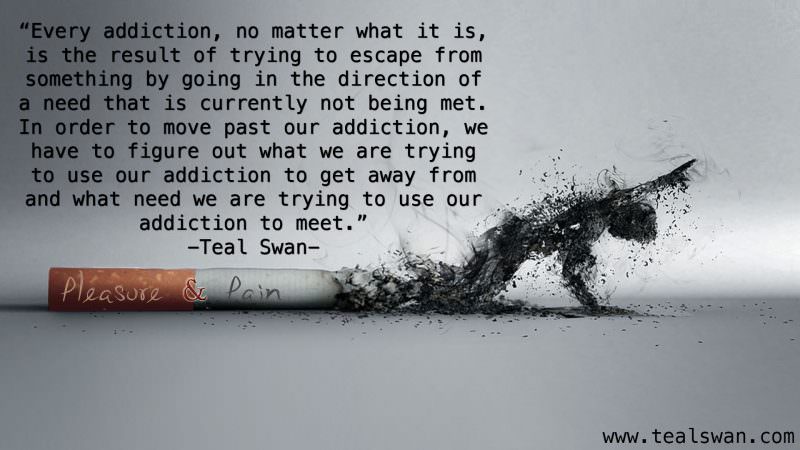Please see second post on this topic.
Tango dancers often brag about being a “Tango addict”. I was. I’ve broken my tango addiction.
What is tango addiction?
In my experience there are three forms of addiction.
- The first is when someone knows they have a harmful addiction, and they try to hide it from others, or deny it to themselves. (Binge eating, gambling, porn, pharmaceutical abuse…)
 The second is when someone is really into something. It’s not a secret, but they often deny to themselves or to others how much money or time they devote to this thing. (Try asking a pot smoker how much money they spend per month. They’re open about the fact they smoke but they’ll be evasive about their financial and time commitments. Shopping addictions usually fit here. Gaming.)
The second is when someone is really into something. It’s not a secret, but they often deny to themselves or to others how much money or time they devote to this thing. (Try asking a pot smoker how much money they spend per month. They’re open about the fact they smoke but they’ll be evasive about their financial and time commitments. Shopping addictions usually fit here. Gaming.)- The third is when someone is really into something which they see as positive. They tell the world about it, they are happy and proud of it, and they may, as tango addicts do, even brag about it. (Another example is serial TV shows.)
Let’s have a look at what addiction is (from wikipedia). I’ve highlighted the sections that I think are important for tango dancers to think about.
Addiction is a brain disorder characterized by compulsive engagement in rewarding stimuli, despite adverse consequences. Despite the involvement of a number of psychosocial factors, a biological process – one which is induced by repeated exposure to an addictive stimulus – is the core pathology that drives the development and maintenance of an addiction. The two properties that characterize all addictive stimuli are that they are reinforcing (i.e., they increase the likelihood that a person will seek repeated exposure to them) and intrinsically rewarding (i.e., they are perceived as being inherently positive, desirable, and pleasurable).… Addiction is a disorder of the brain’s reward system which arises through transcriptional and epigenetic mechanisms and occurs over time from chronically high levels of exposure to an addictive stimulus…Classic hallmarks of addiction include impaired control over substances or behavior, preoccupation with substance or behavior, and continued use despite consequences. Habits and patterns associated with addiction are typically characterized by immediate gratification (short-term reward), coupled with delayed deleterious effects (long-term costs). …The term addiction is misused frequently to refer to other compulsive behaviors or disorders, particularly dependence, in news media.[19] An important distinction between drug addiction and dependence is that drug dependence is a disorder in which cessation of drug use results in an unpleasant state of withdrawal, which can lead to further drug use. Addiction is the compulsive use of a substance or performance of a behavior that is independent of withdrawal.
This definition makes clear that the fact people see tango as a “positive” activity does not make this addiction unproblematic. Addiction can still cause problems, specifically the tendency to prioritize immediate gratification and to overlook long-term negative consequences.
When I was at the worst point in my tango addiction, I prioritized the possibility of a few dances with strangers over my life partnership. The result was that I lost that partnership, and the love of my life, and a very beautiful way of living that we had together which was the most satisfying and happy part of my life.
Even though tango is not rotting your brain or your lungs or draining your bank account like ecstasy, cigarettes or cocaine … even though you could call it “exercise” for your body and brain (prevents Alzheimers) … even though it’s good get out and socialize, especially without an alcohol-focus … A tango addiction, like any addiction, distorts your judgment and priorities.

Here are some common examples of the downside of tango addiction:
- After a sublime tanda, you do not experience satisfaction but immediately look for the next hit.
- No other activity of life is as appealing as tango, even to when you know that not every night is a good one.
- Suffering and degrading yourself or others because you are desperate to get your fix. Examples: accepting dances you don’t want because you “just want to dance” … using a dancer you don’t really want to dance with in order to “be seen” … pretending to like and respect unethical people who you would never be friends with just to get a dance with them … waiting for hours even past the point of humiliation or exhaustion because you haven’t got “it” yet …
- Going dancing when you are not really in the mood only because you don’t want to “miss” a chance to meet someone new, or because a particular person might be there…
The Final Pitch to Peak
She’s got a cute new haircut and she does her makeup well. She’s losing weight and dressing better. She’s also dancing better. She’s making lots of elegant little adornos. To me it looks like showing off, and disconnected, but she makes them sharp and correct.
Now it seems she can be confident of dancing with four of the six best men in the room, depending on the night. If there are six good men, which isn’t always the case.
I stare from my stupor of time, in my sneakers and yoga clothes, having meandered over to the milonga clutching my bourbon-rocks, just for a break from CSS, SEO, and voiceovers.
She’s definitely the best thing to look at here.
And she fascinates me.
I see the drug in her glittering eyes. Her salacious smile could consume everything in the room and she will not be satisfied.
Why does she still dress up? What is she hoping for?
Surely she knows by now that none of those 4 guys want her for anything other than a few dances a week.
All there is to do tonight is show off for the same roomful of lesser dancers who were here last time. Is this really so motivating to spend 30 minutes on makeup, and go buying new dresses?
Her addiction has no relation to reality, to scale. She doesn’t know she’s nearing the top. She doesn’t know that there isn’t much *more* to get. She has no idea that from now on, there will only be less.
Should you be concerned?
Why am I writing about this, to you, today?
Not because I think you’re going to make a mistake like I did. Hopefully no one is that stupid, although I’ve seen other couples get close.
Not because I’m so fucking tired of watching so many beautiful women suffer.
Not because most people manage to quit cocaine – one of the most addictive substances in the world– without any kind of help at all. Because people go clean and sober every day and stick with it. Not because overcoming your tango addiction will set you free in your life.

But because you will be a better dancer, and we will have a healthier community and nicer evenings when we are not relating to each other as a group of addicts, but as a group of artists.
It’s because I want to be part of a tango that liberates people, that takes us to a good place. And what I see is that tango addiction is an endless hunger, a dying game, a field of blindly tilting fantasies, and self-destruction.
Tango is not going to make us healthy until we get off the fairy dust.
So, what are we addicted to?
There’s lots to like about tango, but I think the addictive parts have to do fundamentally with what tango allows us to experience about ourselves and others.
• Tango is an escape from our sense of inadequacy, by enabling us to move and relate in a way that feels dignified and beautiful.
Too often I see girls who dance beautifully slouching around the milonga, dragging their shoes like little girls in their mother’s high heels. Why not walk beautifully all the time?
We can take what we’ve learned about how to move and how to be confident, and bring it to every context and every moment of our life.
• Tango is an escape from aloneness, by enabling us to experience unity with another being.
Now that we know how satisfying partnership is, we can try to build more of it into our lives. Instead of waiting for someone to come to us, we can seek out people who show promise and build relationships with them.
The other night I was dancing with one of my apprentices in a milonga. This surly elite dancer came in and sat down to change her shoes. She glanced up at us dancing and I could feel her shock. She was like “what’s that? who is that guy? where did he come from?”. While she’s been sulking about the inadequacies of her partners and the lack of more, I’ve been building the partners I want.
• Tango is an escape from a mundane and mediocre life, by offering us a taste of the creative divine.
This is not something that came to you because your partner was talented. This is something that’s inside of you, and you can touch it whenever you want to. But you will have to take risks with yourself in order to experience more of this. We have a way to think about the roles, which can help you understand how to get there. Revels are divine space-time machines who draw out their mark’s creativity.
Why and How to break an addiction
NYU Professor of Psychology Adam Alter has written a book, Irresistable, about addictive technologies. The issue here is behavioral addiction to things that people generally believe are not dangerous.
First question is how do you know a behavioral addiction is dangerous? If it breaks into other parts of your life, you can’t stop thinking about it, and if it has an overall negative impact on your life.
- To break the addiction, the first step is to get distance from it. Take a break. (Lock your cellphone in the drawer, or skip a milonga.)
- Second step is to understand the good feelings you’re getting from the addiction and then plan/design an alternate activity that gives you the same feelings in a healthier way. Alter calls it “being the architect of your own life.”
- Third step is be cautious about addictions to goals, which can be emotionally exhausting, and streaks, which can lead to unhealthy decisions. Instead of constantly setting new goals or committing to streaks, Alter recommends designing healthy systems in our lives.
Please see second post on this topic.





 The second is when someone is really into something. It’s not a secret, but they often deny to themselves or to others how much money or time they devote to this thing. (Try asking a pot smoker how much money they spend per month. They’re open about the fact they smoke but they’ll be evasive about their financial and time commitments. Shopping addictions usually fit here.
The second is when someone is really into something. It’s not a secret, but they often deny to themselves or to others how much money or time they devote to this thing. (Try asking a pot smoker how much money they spend per month. They’re open about the fact they smoke but they’ll be evasive about their financial and time commitments. Shopping addictions usually fit here.  Addiction is a brain disorder characterized by compulsive engagement in rewarding stimuli,
Addiction is a brain disorder characterized by compulsive engagement in rewarding stimuli, 













